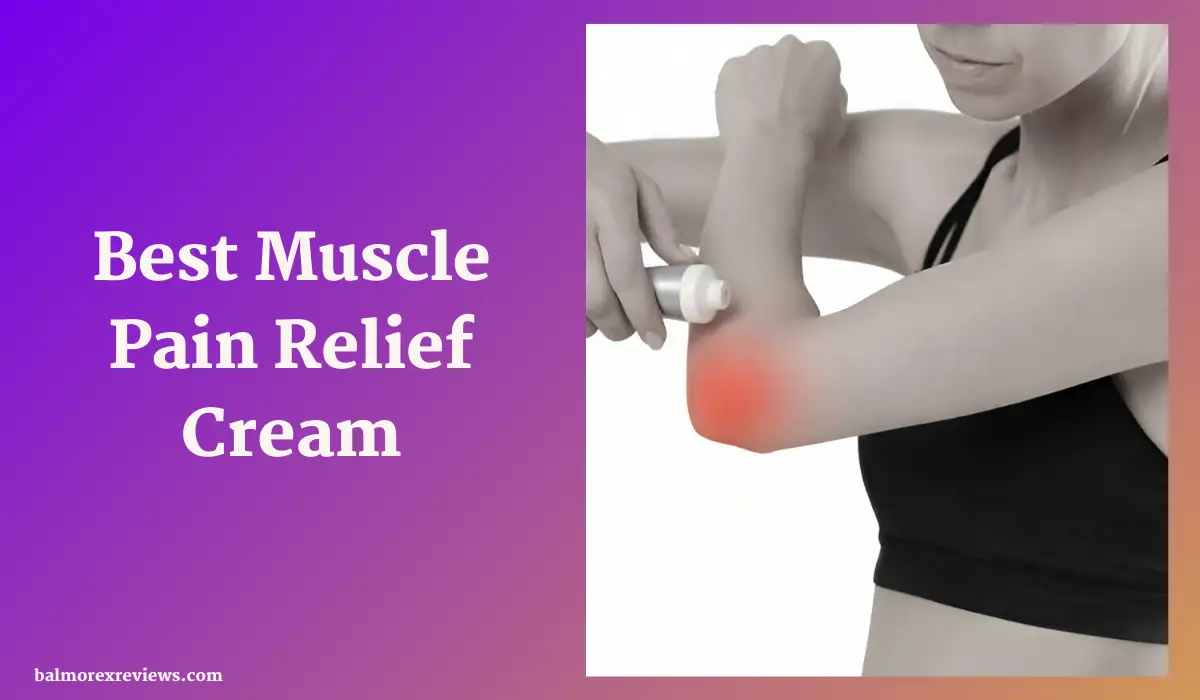How To Choose The Best Muscle Pain Relief Cream? A Guide!
Find expert advice on selecting the optimal muscle pain relief cream with this comprehensive guide. Explore key factors to consider, from active ingredients to application methods, ensuring effective pain management tailored to your needs. Gain insights into navigating the wide range of options available and make informed decisions to alleviate discomfort and enhance recovery. Whether you’re an athlete or dealing with everyday aches, this guide equips you with the knowledge to choose the best muscle pain relief cream for your specific requirements.

Disclaimer: This article has been generated with the assistance of AI tools. While our research team has fact-checked the content, readers should independently verify information for accuracy and reliability.
Muscle pain can be a debilitating and frustrating experience, whether it’s caused by overexertion, injury, or chronic conditions. While rest and proper treatment are essential, many people turn to topical muscle pain relief creams for additional comfort and relief.
With countless options available on the market, choosing the right muscle pain relief cream can be a daunting task. In this comprehensive guide, we’ll explore the key factors to consider when selecting the best muscle pain relief cream for your needs.
Understanding Muscle Pain Relief Creams

Muscle pain relief creams are topical formulations designed to alleviate muscle aches, soreness, and discomfort. They typically contain a combination of active ingredients that work through various mechanisms to provide relief. Some common active ingredients found in muscle pain relief creams include:
- Non-steroidal anti-inflammatory drugs (NSAIDs): These ingredients, such as diclofenac or ibuprofen, help reduce inflammation and pain [1].
- Menthol or camphor: These natural compounds create a cooling or warming sensation, which can temporarily alleviate muscle discomfort [2].
- Capsaicin: Derived from chili peppers, capsaicin can desensitize pain receptors and provide relief for certain types of muscle pain [3].
- Arnica: This herbal ingredient is known for its anti-inflammatory properties and is often used to soothe muscle soreness [4].
Factors To Consider When Choosing A Muscle Pain Relief Cream
- Active Ingredients
The active ingredients in a muscle pain relief cream are perhaps the most crucial factor to consider. Different ingredients target different types of muscle pain and discomfort. Understanding the source of your muscle pain can help you choose a cream with the appropriate active ingredients. - Strength and Concentration
Pay attention to the strength and concentration of the active ingredients in the cream. Higher concentrations may provide more potent relief but could also increase the risk of side effects. It’s essential to follow the product’s instructions and consult a healthcare professional if you have any concerns. - Intended Use
Muscle pain relief creams can be formulated for different purposes, such as post-workout recovery, arthritis pain, or injury rehabilitation. Choose a cream designed specifically for your intended use to ensure the best results. - Scent And Texture
While not directly related to the cream’s effectiveness, the scent and texture can affect your overall experience. Some people prefer unscented creams, while others may find menthol or camphor-based creams more appealing for their cooling or warming sensations. - Skin Sensitivity
If you have sensitive skin or allergies, it’s crucial to check the ingredient list carefully and avoid creams with potential irritants or allergens. Look for hypoallergenic or fragrance-free options if necessary. - Brand Reputation And Reviews
Research the brand’s reputation and read customer reviews to get an idea of the cream’s effectiveness, ease of use, and potential side effects. Reputable brands with positive reviews can be a good indicator of quality. - Price And Value
While cost shouldn’t be the sole deciding factor, it’s essential to consider the price and value of the muscle pain relief cream. Compare prices and quantities across different brands and choose one that fits your budget while still providing effective relief.
Tips For Using Muscle Pain Relief Creams
- Follow Instructions: Read and follow the product’s instructions carefully, including application methods, frequency, and any precautions or warnings.
- Clean and Dry Skin: Apply the cream to clean, dry skin for better absorption and effectiveness.
- Massage Gently: Gently massage the cream into the affected area to promote absorption and increase blood flow.
- Avoid Sensitive Areas: Avoid applying the cream to broken or irritated skin, as well as sensitive areas like the eyes or mucous membranes.
- Wash Hands: After application, wash your hands thoroughly to avoid accidental exposure to other areas.
- Monitor For Reactions: If you experience any adverse reactions, such as rashes, burning, or increased pain, discontinue use and consult a healthcare professional.
When To Seek Professional Help?
While muscle pain relief creams can provide temporary relief, it’s important to address the underlying cause of muscle pain. If you experience severe, persistent, or worsening muscle pain, or if the pain is accompanied by other concerning symptoms, it’s recommended to seek medical attention. A healthcare professional can diagnose the cause of your muscle pain and recommend appropriate treatment options.
Takeaway
Choosing the best muscle pain relief cream can make a significant difference in managing muscle aches and discomfort. By considering factors such as active ingredients, intended use, skin sensitivity, and brand reputation, you can find a cream that effectively targets your specific needs.
Remember to follow instructions carefully, monitor for reactions, and seek professional help if necessary. With the right muscle pain relief cream and a proactive approach, you can find relief and improve your overall quality of life.
References
[1] Derry, S., Moore, R. A., & Rabbie, R. (2012). Topical NSAIDs for chronic musculoskeletal pain in adults. Cochrane Database of Systematic Reviews, (9). https://doi.org/10.1002/14651858.CD007400.pub2
[2] Sundstrup, E., Jakobsen, M. D., Brandt, M., Jay, K., Persson, R., Aagaard, P., & Andersen, L. L. (2014). Acute muscle pain relief by topical menthol gel: A double-blind, randomized, placebo-controlled trial. European Journal of Pain, 18(2), 210-218. https://doi.org/10.1002/j.1532-2149.2013.00359.x
[3] Anand, P., & Bley, K. (2011). Topical capsaicin for pain management: Therapeutic potential and mechanisms of action of the new high-concentration capsaicin 8% patch. British Journal of Anaesthesia, 107(4), 490-502. https://doi.org/10.1093/bja/aer260
[4] Arnica: A Paradoxical Plant. (2022, January 18). WebMD. https://www.webmd.com/vitamins/ai/ingredientmono-263/arnica
[5] Baracaldo, A. P. Y., & Diaz, C. E. (2022). Topical Therapy for Muscle Pain. In StatPearls. StatPearls Publishing. https://www.ncbi.nlm.nih.gov/books/NBK554566/
[6] Mayo Clinic. (2022, April 15). Muscle pain relief: Creams, gels, and other topical treatments. https://www.mayoclinic.org/diseases-conditions/muscle-pain/multimedia/muscle-pain-relief/vid-20084699
Natalie Smith
Natalie Smith is a highly respected Osteopath with over 15 years of experience in treating a wide range of musculoskeletal conditions. She graduated from the British School of Osteopathy with a Master’s degree in Osteopathic Medicine and is a registered member of the General Osteopathic Council. Natalie’s expertise spans the diagnosis and treatment of issues affecting the muscles, bones, joints, and connective tissues. She utilizes a holistic, patient-centered approach, combining manual techniques such as spinal manipulation, soft tissue massage, and joint mobilization to alleviate pain and restore optimal function. Passionate about educating her patients, Natalie frequently speaks at local health workshops and has authored articles on osteopathic care for several respected medical journals. Her commitment to ongoing professional development ensures she remains at the forefront of the latest advancements in the field of osteopathy.
